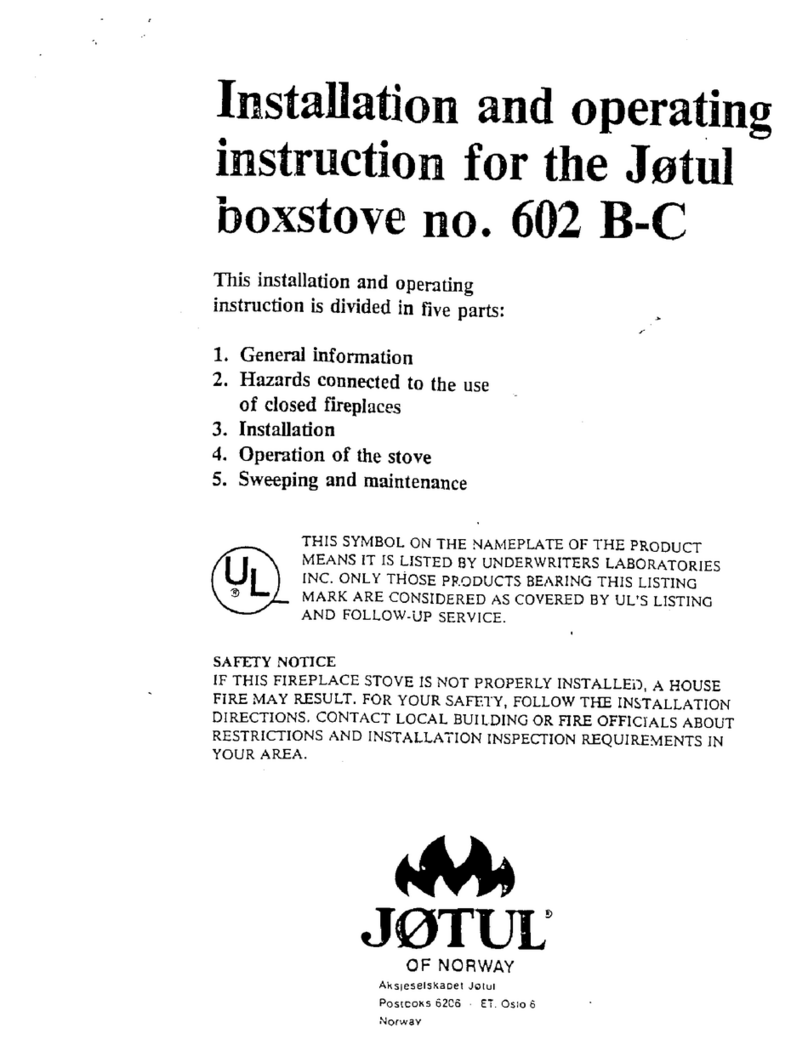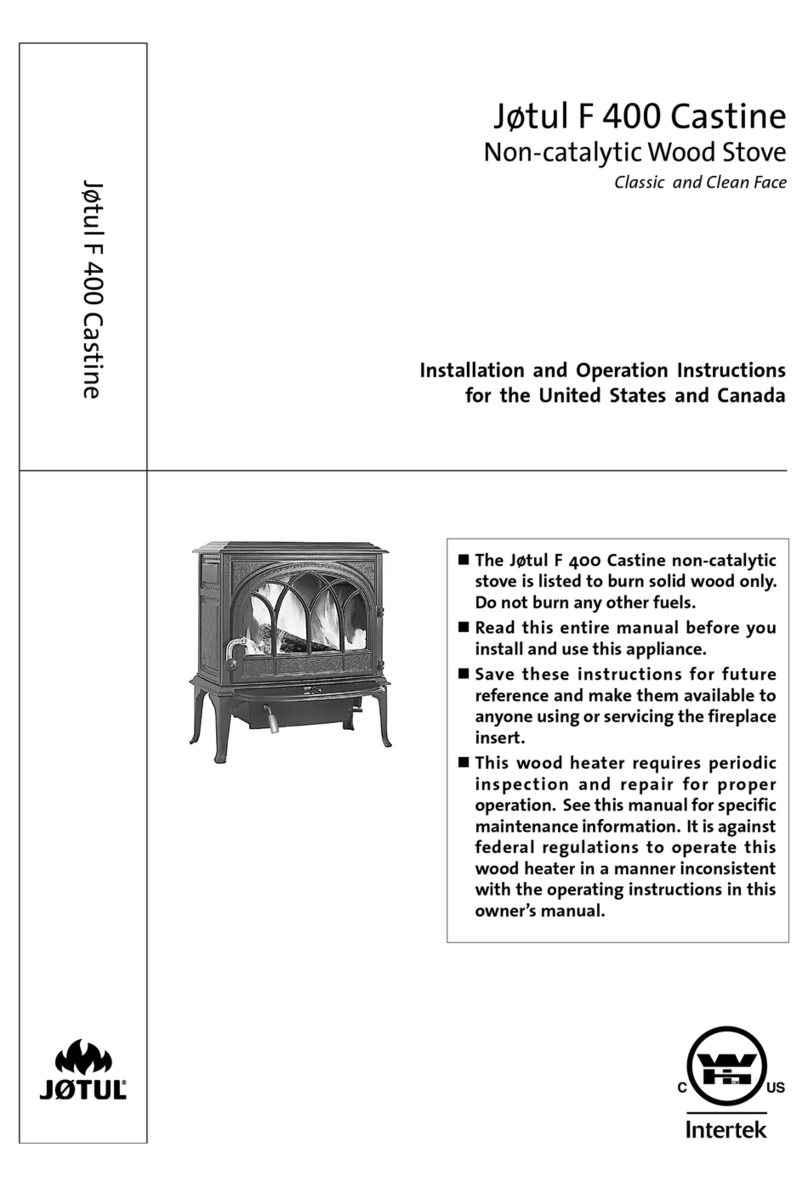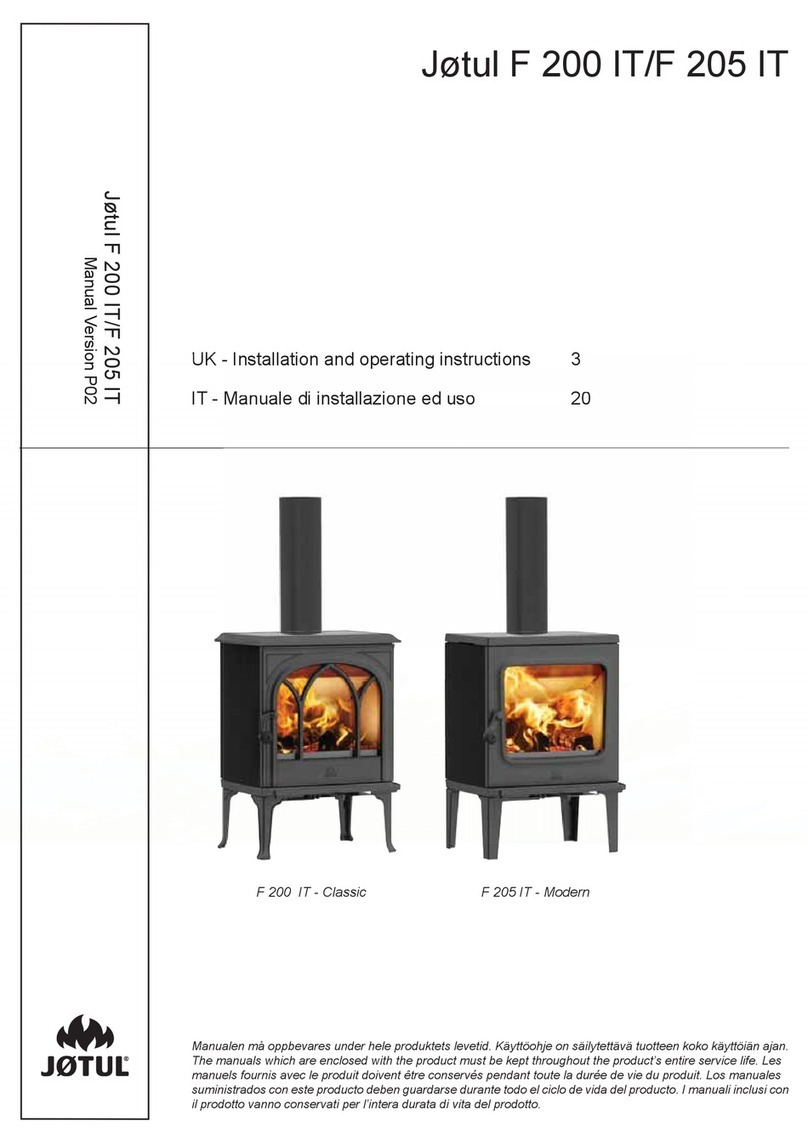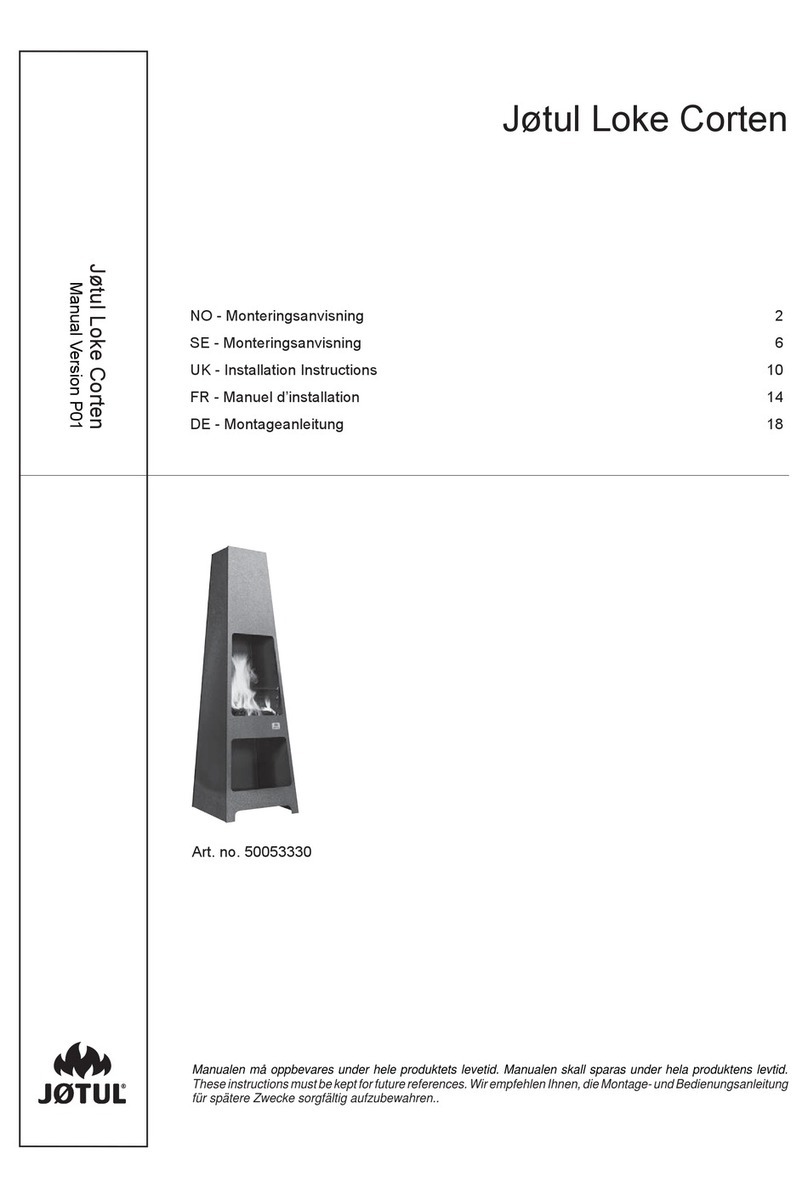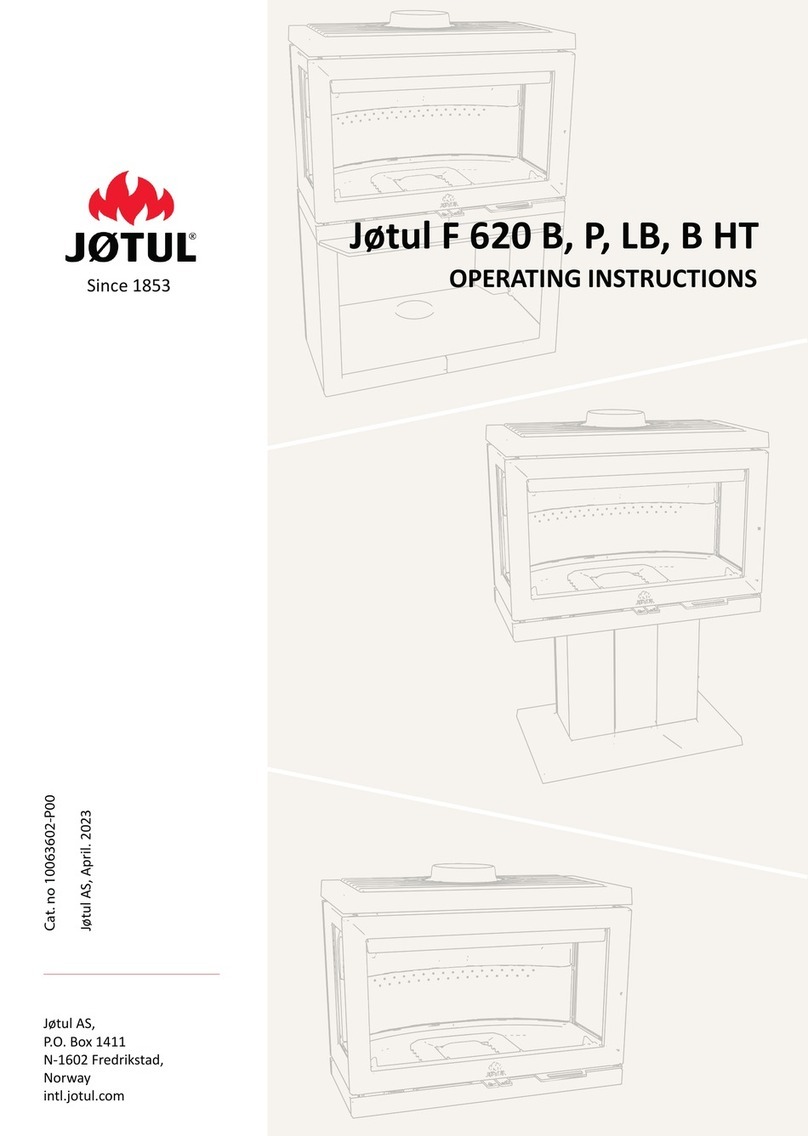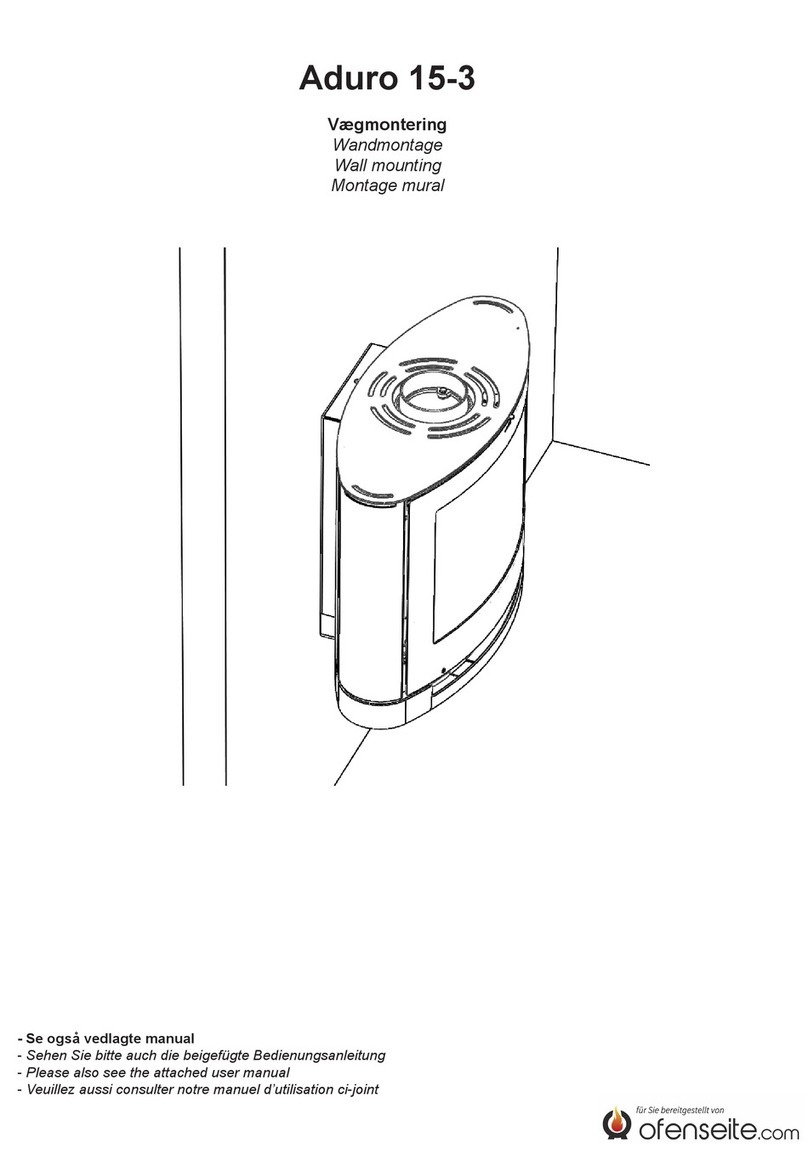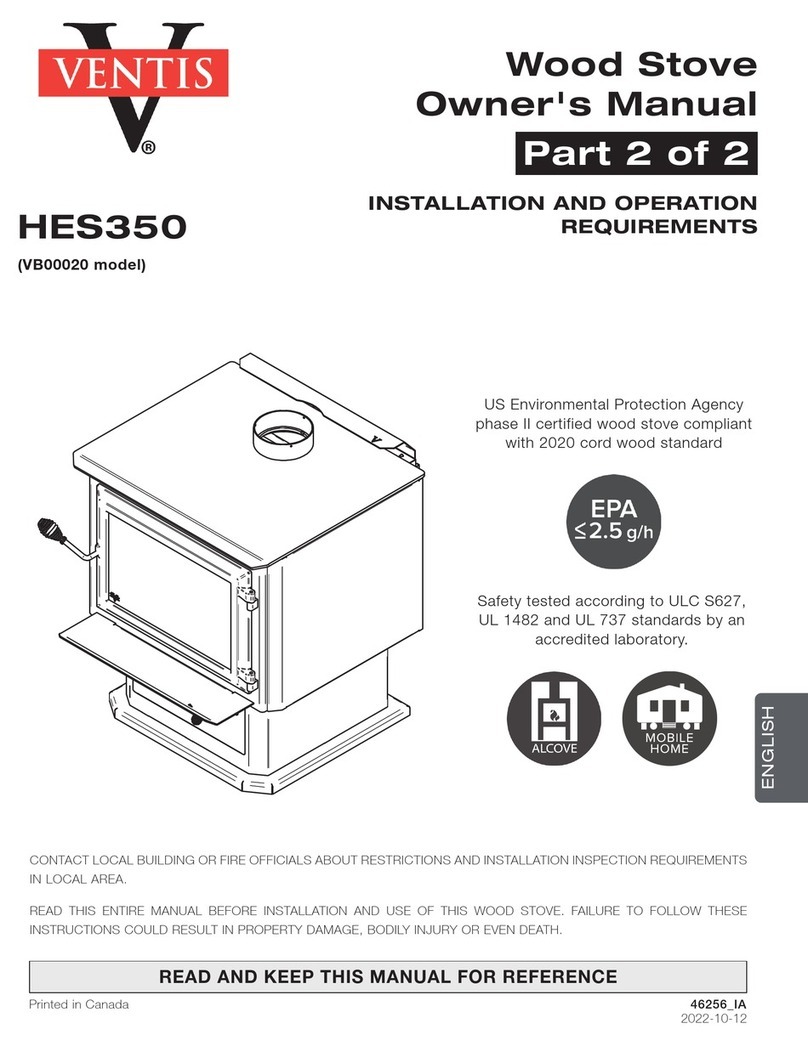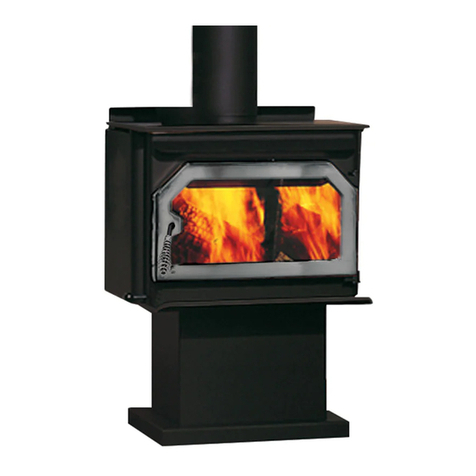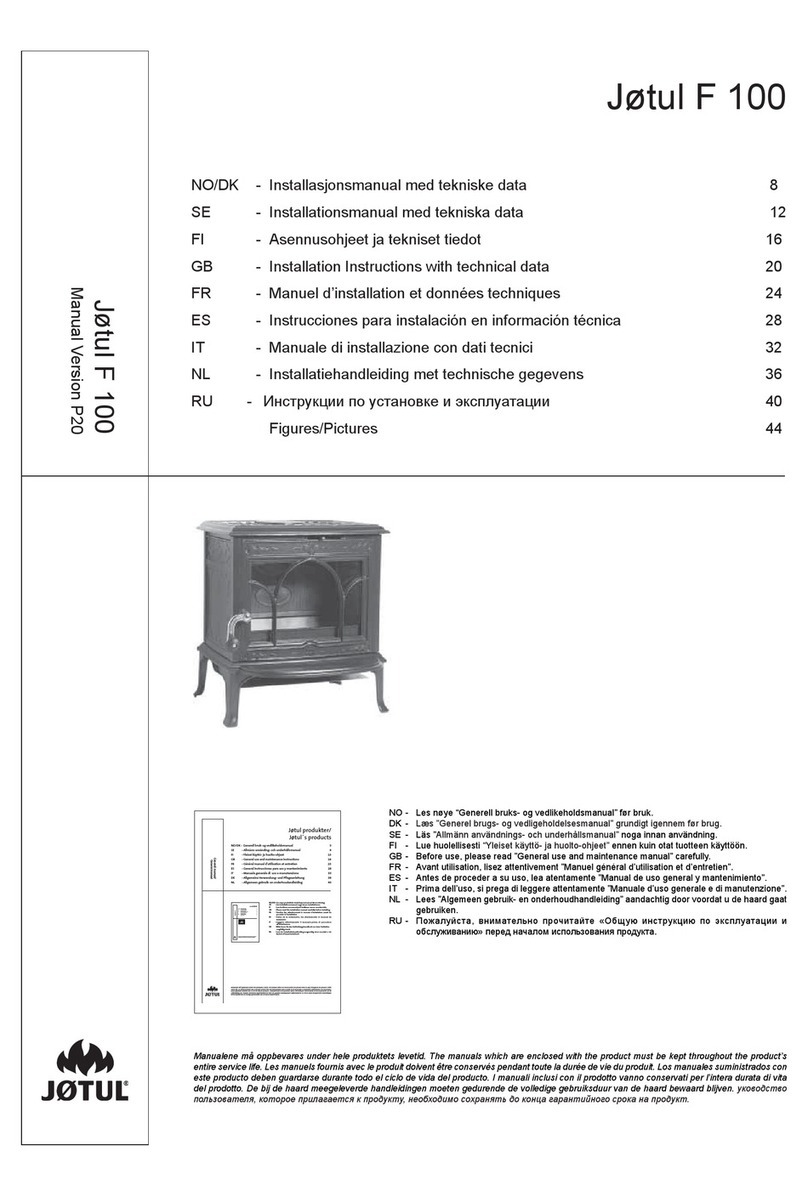
Prefabricated Chimneys
If a p efab icated metal chimney is to be used it must be
a chimney type that is tested and listed fo use with solid
fuel burning a liances.
That means a chimney that is tested to the following:
High Tempe atu e (HT) Chimney Standa d UL 103 fo
the U.S. and High Tempe atu e Standa d ULC
S-629 fo Canada.
The manufactu e s installation inst uctions must be
followed p ecisely. Always maintain the p ope
clea ance to combustibles as established by the pipe
manufactu e . This clea ance is usually a minimum of
2, although it may va y by manufactu e o fo ce tain
chimney components.
Chimney Height
Whethe a mason y chimney o p efab icated metal
chimney is used it must be the equi ed height above the
oof line.
The chimney size should not be less than the c oss-
sectional a ea of the flue colla , and not mo e than th ee
times g eate than the c oss-sectional a ea of the flue
colla .
When selecting a chimney type and the location fo the
chimney in the house, keep this in mind: it is the chimney
that makes the stove wo k, NOT the stove that makes
the chimney wo k. This is because a chimney actually
c eates a suction, called d aft, which pulls ai th ough
the stove.
Seve al facto s affect d aft: chimney height, c oss-
sectional a ea (size), and tempe atu e of the chimney,
as well as the p oximity of su ounding t ees o buildings.
As a esult, a sho t mason y chimney on the exte io of
a house will give the poo est pe fo mance. This is
because it can be ve y difficult to wa m the chimney
the eby c eating inadequate d aft. In ext emely cold
no the n a eas it may be necessa y to eline the chimney
o extend its height to help establish d aft.
Conve sely, a tall mason y chimney inside the house is
easie to keep wa m and will pe fo m the best.
The following guidelines give the necessa y chimney
equi ements based on the national code (ANSI-NFPA
211fo the US. And CSA CAN-B365 fo Canada).
Howeve , many local codes diffe f om the national code
to take into account climate, altitude, o othe facto s.
Masonry Chimneys
When installing the Fi elight CB into a mason y chimney
you must confo m to all of the following guidelines:
· The mason y chimney must have a fi eclay line o
equivalent, with a minimum thickness of 5/8 and must
be installed with ef acto y mo ta . The e must be at
least ½ ai space between the flue line and chimney
wall.
5
· The fi eclay flue line must have a nominal size of
8 X 8, and should not be la ge than 8 X 12. If a
ound fi eclay line is to be used it must have a minimum
inside diamete of 6 and not la ge than 8 in diamete .
If a chimney with la ge dimensions is to be used, it should
be elined with an app op iate line that is code app oved.
· The mason y wall of the chimney, if b ick o modula
block, must be a minimum of 4 nominal thickness. A
mountain o ubble stone wall must be at least 12 thick.
· A newly-built chimney must confo m to local codes
and in thei absence must ecognize national egulations.
· When using an existing chimney, it must be inspected
by a licensed p ofessional chimney sweep, fi e official,
o code office , to ensu e that the chimney is in p ope
wo king o de .
· No othe appliance can be vented into the same flue.
· An ai tight clean-out doo should be located at the
base of the chimney.
It is important that you check with your local
building officials to find out what codes apply in
your area before installing your new Firelight
CB.
Remember: your local inspector(s) ha e the final
authority in appro ing your installation. It is
always best to consult with them prior to the
installation.
NOTICE:

